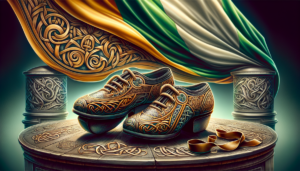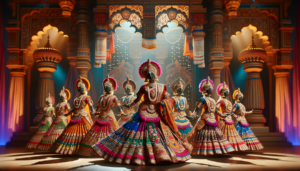Introduction to Dance Techniques
Dance is a universal language that transcends boundaries, allowing individuals to express themselves through movement. Dance techniques serve as the foundation for mastering various dance styles and executing precise, expressive dance movements. Whether you are a beginner or an experienced dancer, understanding and practicing dance techniques is essential for your growth and success in the art form.
What Are Dance Techniques?
Dance techniques refer to the specific methods, skills, and principles used in performing dance movements. These techniques form the basis of dance education and are taught in dance studios, schools, and workshops around the world. By learning and mastering dance techniques, dancers can execute movements with precision, grace, and style.
Dance techniques are essential for developing proper alignment, balance, coordination, and control. They help dancers move efficiently and safely, preventing injuries and enabling them to perform at their best. Each dance style has its own set of techniques that reflect its unique characteristics and cultural origins.
Importance of Mastering Dance Techniques
Mastering dance techniques is crucial for any dancer who wants to excel in their craft. Proper technique enhances the quality of dance performance, allowing dancers to execute movements with clarity, power, and expression. It also enables dancers to learn new choreography more quickly and efficiently.
Consistent dance training and practice of techniques lead to improved flexibility, strength, and endurance. As dancers gain mastery over their bodies and movements, they develop greater confidence and stage presence. This confidence translates into more engaging and captivating performances that connect with audiences on a deeper level.
Moreover, having a strong foundation in dance techniques opens up opportunities for dancers to explore various styles and genres. With a solid technical base, dancers can adapt to different choreographic demands and expand their artistic range. This versatility makes them valuable assets in the dance industry and increases their chances of success in auditions, competitions, and professional engagements.
Basic Dance Techniques for Beginners
Beginner dance techniques focus on fundamental movements that form the building blocks of various dance styles. These techniques are usually taught in beginner-level dance classes and provide a solid foundation for further dance education. Here are some essential beginner dance techniques:
The Box Step
The Box Step is a versatile beginner dance technique that forms the basis of several ballroom dances, such as the waltz, foxtrot, and rumba. This dance movement involves stepping in a square pattern, with each step forming one side of the box. The Box Step helps dancers develop timing, coordination, and partnership skills.
To execute the Box Step:
- Step forward with your left foot.
- Step to the side with your right foot.
- Bring your left foot next to your right foot.
- Step back with your right foot.
- Step to the side with your left foot.
- Bring your right foot next to your left foot.
Chassé
Chassé is a lively beginner dance technique found in various dance styles, including cha-cha, samba, and jazz. This movement involves a series of three quick steps, giving the illusion of gliding or chasing across the floor. Chassé adds energy and excitement to dance performances.
To perform a Chassé:
- Step to the side with your right foot.
- Close your left foot next to your right foot, taking weight.
- Step to the side again with your right foot.
Repeat the same pattern starting with your left foot to Chassé in the opposite direction.
Grapevine
The Grapevine, also known as the Weave, is a popular beginner dance technique seen in line dances and country-western styles. This dance movement involves a side-to-side pattern where the feet alternately cross in front and behind each other. The Grapevine helps dancers develop coordination and spatial awareness.
To execute the Grapevine:
- Step to the side with your right foot.
- Cross your left foot behind your right foot.
- Step to the side with your right foot.
- Cross your left foot in front of your right foot.
Repeat the same pattern starting with your left foot to Grapevine in the opposite direction.
Intermediate Dance Techniques
As dancers progress in their dance training and master beginner techniques, they can move on to intermediate dance techniques that add complexity and refinement to their movements. These techniques are often taught in intermediate-level dance classes and require a higher level of skill and control. Here are a few notable intermediate dance techniques:
Piqué Turn
The Piqué Turn is an elegant intermediate dance technique commonly seen in ballet and contemporary dance. This dance movement involves stepping onto the ball of one foot and performing a graceful rotation, ending with the working leg extended. Piqué Turns showcase a dancer’s balance, control, and precision.
To execute a Piqué Turn:
- Step onto the ball of your right foot, keeping your left leg extended behind you.
- Rotate your body a quarter turn to the right, bringing your left foot to meet your right foot in a closed position.
- Continue rotating until you complete a full turn, ending with your left leg extended.
Hip Isolations
Hip Isolations are a fundamental intermediate dance technique in various dance styles, particularly in hip-hop and street dance. This technique involves moving the hips independently from the rest of the body, creating smooth and rhythmic patterns. Hip Isolations add a layer of groove and style to dance performances.
To perform Hip Isolations:
- Stand with your feet shoulder-width apart, knees slightly bent.
- Shift your weight to one side, allowing your hip to naturally lift.
- Slowly circle your hips in a continuous motion, keeping your upper body still.
- Reverse the direction of the circle.
- Experiment with different rhythms and accents to create unique patterns.
Advanced Dance Techniques
Advanced dance techniques build upon the foundations established in beginner and intermediate levels, incorporating greater complexity, artistry, and individual expression. These techniques require significant dance training and are essential for achieving excellence in dance performance. Here are some examples of advanced dance techniques:
Combining Techniques for Performance
Advanced dancers have the ability to seamlessly combine various dance techniques to create dynamic and engaging performances. This involves understanding how different techniques can be layered and blended to produce unique movement qualities and visual effects. For example:
- Incorporating Piqué Turns into a sequence of Chassés and Grapevines
- Combining Hip Isolations with complex footwork patterns
- Integrating elements of different dance styles, such as ballet and hip-hop, into a single routine
By combining techniques in creative ways, advanced dancers can push the boundaries of their art form and create memorable performances that captivate audiences.
Innovative Movements and Styles
Advanced dancers often explore innovative movements and dance styles that challenge traditional techniques and conventions. This involves experimenting with new ways of moving the body, incorporating unconventional gestures, and developing original choreographic concepts. Some examples include:
- Contortion and flexibility-based movements
- Gravity-defying leaps and acrobatics
- Fusion of dance styles from different cultures and eras
- Incorporation of technology, such as projection mapping or motion capture
By pushing the limits of what is possible with the human body and embracing innovation, advanced dancers contribute to the evolution and growth of the dance art form.
Dance Training and Education
To master dance techniques at any level, dancers need access to quality dance training and education. This involves finding the right resources, teachers, and learning environments that can support their growth and development as artists.
Finding the Right Dance Studio
Choosing the right dance studio is crucial for receiving proper dance training and guidance. When selecting a studio, consider factors such as:
- Qualifications and experience of the instructors
- Range of dance classes and styles offered
- Quality of the facilities and equipment
- Opportunities for performance and competition
- Overall culture and atmosphere of the studio
Reputable dance studios like Fred Astaire Dance Studios offer comprehensive training programs for all skill levels, with locations in cities such as Carmel and Greenwood. These studios provide a supportive and nurturing environment where dancers can thrive and reach their full potential.
Resources for Learning Dance Techniques
In addition to attending regular dance classes, dancers can take advantage of various resources to enhance their dance education and mastery of techniques. Some valuable resources include:
- Online video tutorials and workshops
- Dance technique books and manuals
- Workshops and masterclasses with renowned dancers and choreographers
- Dance-focused fitness and conditioning programs
- Participation in dance communities and forums
By utilizing a combination of studio training and supplementary resources, dancers can gain a well-rounded education in dance techniques and continuously improve their skills.
Dance Competitions and Performances
Dance competitions and performances provide opportunities for dancers to showcase their mastery of techniques, gain recognition for their achievements, and connect with audiences. These events are an integral part of the dance industry and can significantly impact a dancer’s career trajectory.
Preparing for Competitions
Dance competitions require careful preparation and dedicated training. To excel in competitive settings, dancers should:
- Choose choreography that highlights their technical strengths and unique style
- Practice their routines consistently, focusing on clean execution and artistic expression
- Seek feedback and guidance from experienced coaches and mentors
- Develop mental resilience and strategies for managing performance anxiety
- Ensure they have the appropriate costumes, music, and props for their performances
By approaching competitions with discipline and a growth mindset, dancers can use these events as opportunities to challenge themselves, learn from their peers, and refine their craft.
Showcasing Your Skills
Dance performances allow dancers to share their artistry and techniques with a wider audience. Whether performing in a local showcase, a professional production, or a virtual event, dancers should aim to:
- Select music and choreography that resonates with their personal style and strengths
- Engage with the audience through genuine emotion and storytelling
- Demonstrate a high level of technical proficiency and attention to detail
- Collaborate effectively with other dancers, musicians, and production staff
- Embrace the opportunity to inspire and connect with others through their art
By approaching performances with passion, professionalism, and a commitment to excellence, dancers can create memorable experiences for themselves and their audiences.
Conclusion
Dance techniques form the foundation of a dancer’s artistic journey, enabling them to express themselves with clarity, precision, and creativity. By mastering these techniques through dedicated training and education, dancers can unlock their full potential and achieve success in the competitive world of dance performance.
The Journey of Mastering Dance Techniques
Mastering dance techniques is a lifelong journey that requires patience, perseverance, and a love for the art form. It involves:
- Developing a strong technical foundation through consistent practice and training
- Continuously challenging oneself to learn new styles, movements, and concepts
- Seeking guidance and feedback from experienced teachers and mentors
- Cultivating a growth mindset and embracing both successes and setbacks as opportunities for learning
- Finding joy and personal fulfillment in the process of artistic exploration and expression
By embracing the journey of mastering dance techniques, dancers can not only achieve technical excellence but also discover their unique voice and contribute to the rich tapestry of the dance world.
Encouragement for All Levels
Whether you are a beginner taking your first steps or an advanced dancer pushing the boundaries of your art, remember that every stage of the journey holds value and opportunity for growth. Embrace the challenges, celebrate the breakthroughs, and find inspiration in the dancers and teachers who have paved the way before you.
As you navigate the world of dance techniques, remember that your unique perspective, passion, and dedication are what make you an artist. Trust in your abilities, stay curious and open to learning, and never stop pursuing your love for dance. With commitment and heart, you have the power to master techniques, create beauty, and inspire others through your art.
So step onto the dance floor with confidence, knowing that each day brings new possibilities for growth and expression. Embrace the joys and challenges of dance education, and let your mastery of techniques be a testament to your artistry and love for this timeless art form.






